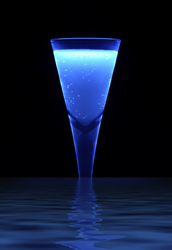A bright future for hybrid materials
Reported for the first time in 2010, clustomesogens combine liquid crystals (of which the fundamental unit is a mesogen) and octahedral clusters of six metal atoms (M6 clusters). EU-funded scientists advanced the current state of the art with novel processing to overcome difficulties associated with metal cluster synthesis through the project 'Luminescent liquid crystalline materials based on metal clusters' (MESOCLUST).Liquid crystals, self-assembling molecular materials, behave somewhere between a liquid and a solid. Molecules are partially ordered as in a crystal but more mobile as in a liquid. Metal clusters are groups of a few metal atoms held by metal bonds that give them unusual electrical, optical and magnetic properties.Clustomesogens combine the self-assembly of liquid crystals with the high luminescence of the clusters in the red to near-infrared region. The M6 clusters impart photoluminescence with quantum yields (relating absorption to emission) that can approach 100 %. The compounds are liquid crystal in behaviour over a wide temperature range making them suitable for a variety of applications, including analytical information and display devices.Researchers exploited covalent binding and ionic self-assembly to facilitate the combination of M6 nanoclusters with liquid crystal ordering. The original clusters were made of molybdenum. Here, scientists employed molybdenum, tungsten and rhenium. The key to success was in the use of neutral organic ligands to control the number and position of liquid crystal groups for functionalisation of the M6 clusters. The binding did not affect emission properties, while the functionalities imparted were preserved over the entire temperature range.Several new materials served as test samples of electro-optical and photo-physical properties. Outcomes provided a strong basis for correlation between the chemical structure of novel hybrid materials and their liquid crystal behaviours.Clustomesogens are an exciting new class of materials combining the mobility and self-assembly of liquid crystals with the intense luminescence of metal clusters. Although controlling the formation of bonding and structure when dealing with clusters of six atoms on the nano scale was technically challenging, MESOCLUST scientists accomplished it with grace opening the door to exploration of new combinations of materials and the development of applications.






